I purchased an electronic rustproofing device called "Counteractrust" from Canadian Tire which had them on sale at $199.00
You can see there website at
www.counteractrust.comThe website has various companies extolling the benefits of this system.
I dislike the oily residue left by undercoating and thought this would be a great system - if it worked??????????????????

The picture above shows the device as installed in the 1997 VW Golf. The white pad is the Anhode which connects to the black box but sits against the metal of the car glued on with aircraft quality adhesive.
With the small amount of physics in my background I cannot see how such a small capacitance plate (9 square inches) can make a difference to a whole car, which I assume from the device set up, is acting as the other plate of a capacitor. The black box is powered by the car battery and is said to draw only as much current as a digital clock.
Installation was fairly simple requiring only that the car have a clean surface for attachment of the plate and the device. There is a flashing LED on the box to tell you that the device is working.
The guarantee is 5 years but only if the device is installed and checked every year by CTC.
Experiment:OK so I wanted to see if the rustproofing box that I installed in my vehicle would make any difference to rust.
I decided to attac

h two steel wool pads to the vehicle (a 1997 VW Golf which is already a bit rusty).
I weighed two coarse steel wool pads on a comparison scale.
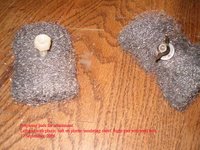
I pierced the pads and installed a steel bolt through one and a plastic bolt through the other.
These pads were then attached to the VW near the back and under the car, just above the tow hitch.
I photographed the pads installed.
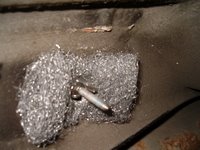
The pad above is attached with a steel bolt and tested for ground on the car body.
The pad below is attached with a plastic bolt and isolated from the car body. It is on a lexan plastic plate to ensure no electrical connection with the car.
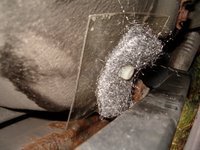
My theory is that the pad which is grounded to the car should have a measure of rust protection from the Counteractrust device since it is essentially a part of the car.
Thus I expect that one pad should rust faster than the other. They are mounted on the car in fairly close proximity to avoid a "location difference".
Comments are welcome.

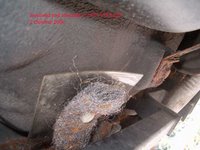
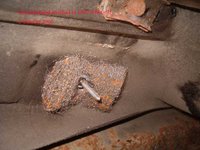
 The picture above shows the device as installed in the 1997 VW Golf. The white pad is the Anhode which connects to the black box but sits against the metal of the car glued on with aircraft quality adhesive.
The picture above shows the device as installed in the 1997 VW Golf. The white pad is the Anhode which connects to the black box but sits against the metal of the car glued on with aircraft quality adhesive.


